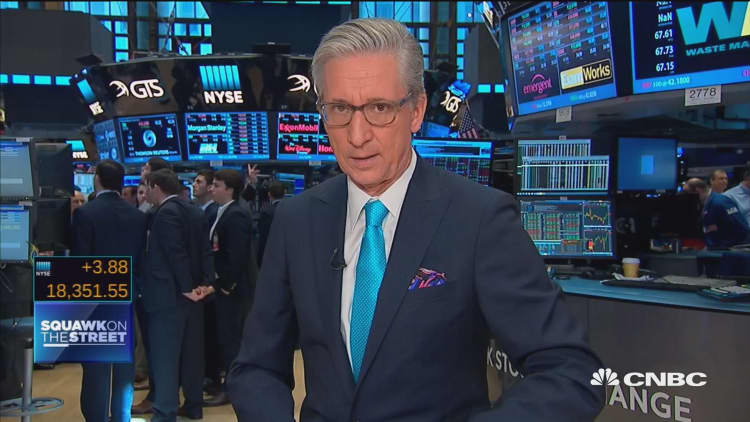
First we had FANG (Facebook, Amazon, Netflix, Google). Then we (briefly) had STUB (Staples, Telecom, Utilities, Bonds).
But how to describe the surprising rally of the last week, when the U.S. has shrugged off post-Brexit worries and blasted to new highs?
An informal survey of traders this morning produced a series of suggestions, including several expressing disbelief, from MMTB (More Money Than Brains) to "The Everything Rally," kind of like an everything bagel, but for stocks.
There's something to the idea of an "everything" rally, but most traders identified three specific reasons driving the rally, and suggested acronyms to describe it:
1) FEBB: FOMC, ECB, BOJ, BOE. Central bank liquidity. The majority voted for central bank liquidity as the primary driver of the rally, and who can blame them? There's talk of "helicopter money" in Japan. Of bailouts of Italian banks. Of more bond buying by the ECB. Of rate cuts in the UK.
2) TINA: "there is no alternative" to stocks. Stocks are the better buy. This acronym, already old, has been much derided recently. There is always alternatives to stocks, like bonds, cash, and gold. This is true but not interesting. The marginal buyer looks at the low rates on Treasuries, and the comparatively high dividend yields on stocks, and rationally concludes that stocks are a better buy. Throw in the mostly improving U.S. economic data—which, however sluggish you may describe it, is better than the rest of the world--and you have the additional stimulus of foreign money pouring into our U.S. stock and bond markets.
3) FOMO: fear of missing out. Lagging performance: marginal buyers (hedge funds, active traders) are again surprised by the rally and need to catch up.
But my favorite—suggested by several baffled traders—was this one:
4) The Pokemon rally: all fluff, no fundamentals. This rally in stocks is not really being fueled by fundamentals, so nobody knows how long it will last.
Let me quickly address two other reasons that have been put forth for the market's advance:
1) Stock buybacks have greatly reduced the amount of stock available to trade. This is widely believed, but not true. In 2005, the "float" (the amount of stock freely available to trade) of the S&P 500 was 299.8 billion shares, according to S&P Capital IQ. Today, it's 298.2 billion shares, essentially unchanged. And that includes stock splits!
Huh? What happened to all those buybacks? It's important to distinguish between buybacks and share count reductions. Most buybacks do not result in share count reductions because the buying is offset by corporations issuing new stock, mostly in the form of options, to employees. Several companies—such as IBM and ExxonMobil—did buy back more stock than they issued and have notably reduced their share counts, but they are in the minority.
2) There's a lot fewer companies that are public than 20 years ago. There's some truth to this. According to S&P Capital IQ, In 1997, there were 5,316 companies in 1997 with a market capitalization above $50 million. Today' there's 4,370, a drop of almost 20 percent. But as I noted above the amount of stock available to trade for the largest companies haven't changed much.
What has changed dramatically is the price of stocks. The average S&P 500 stock was $51 in 1997, only $52 ten years later at the end of 2007, and $86 today. So every time we trade, we're moving around more money than a decade ago.


